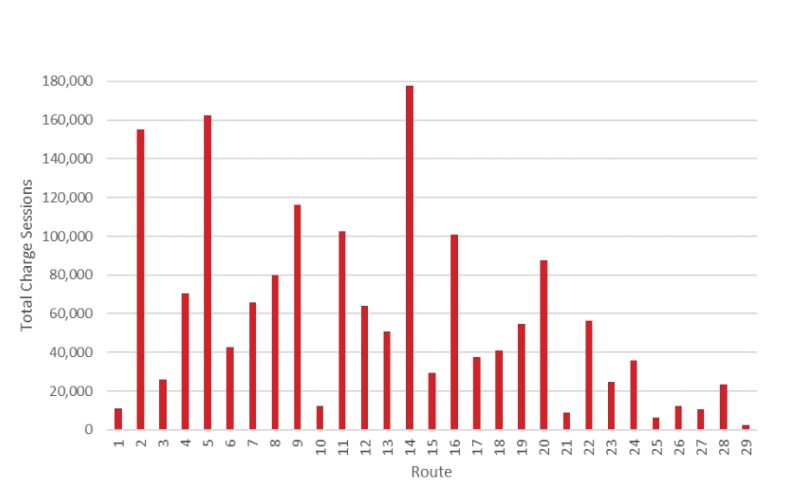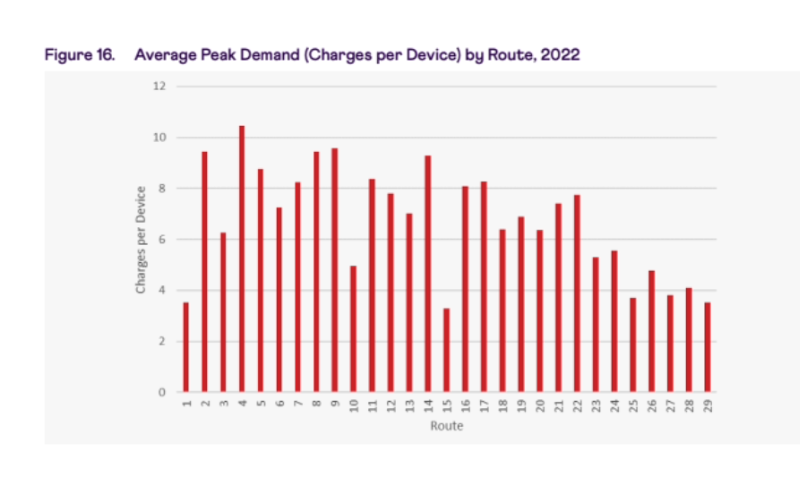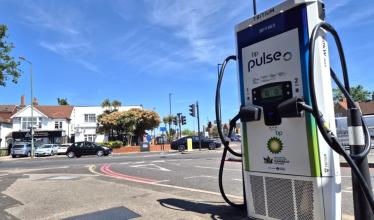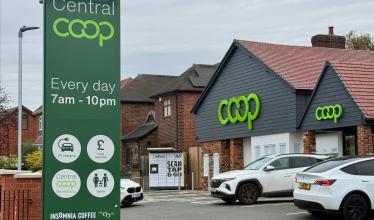A new report commissioned by the Committee for Climate Change aims to understand how peak traffic flow on the Strategic Road Network (SRN) matches that of peak charging demand for electric vehicles (EV), as well as the anticipated infrastructure required for en-route charging to meet demand through to 2050.
The report, which was written by engineering and consulting group Systra, delivered an assessment of 29 SRN routes across Great Britain by analysing Zapmap charging data and traffic counts (available online from National Highways and Traffic Scotland). Zapmap provided data from over 1.6 million charging sessions from 2022 across the 29 routes.
Total charge sessions by route ranged from 177,855 (Route 14 - M1 - London to Leeds) to 2,367 (route 29 - A96 Aberdeen to Inverness) and a median of 42,719 (route 6 - A303/A30 London M25-Exeter), totals by route are shown in Figure 12.

Figure 12. Total Yearly Charge Sessions by Route, 2022
Traffic flows were found to be the busiest on Fridays across the majority of routes analysed. Bank holiday weekends accounted for three of the top 10 busiest traffic flow days.
Interestingly, charging demand did not correlate with the traffic flow data, and was spread more evenly across the week - although demand for EV charging was still higher generally at weekends.
Days when en-route charging was at a peak may be reflective of days when people were choosing to take longer journeys, but were not necessarily the days when traffic flows were highest.
Zapmap’s annual survey results provide insight into why this would be. With 84% of current EV drivers having a home charger, the demand for charging along the SRN during peak weekday/commuter traffic is unlikely to be high, as the majority of day to day local charging needs are currently fulfilled at home. It’s when making those longer, less regular, journeys that see EV drivers flocking to use the en-route public charging network along the SRN.
Data from Zapmap revealed that the average peak demand per route (shown in figure 16) varied greatly, ranging from over 10 sessions per device per peak day (Route 4 - M11/M25/M23/A23 - Cambridge to Brighton) down to below 4 sessions per device per peak day (route 15 - A47 Peterborough to Great Yarmouth) - demonstrating that, going forwards, careful planning is required to ensure EV charging infrastructure is deployed along the SRN most effectively.

Figure 16. Average peak demand by route, 2022.
“The Zapmap data highlights the variation in utilisation patterns across different parts of the SRN at peak times, demonstrating how important it will be to ensure devices are deployed in appropriate numbers and at appropriate locations along the SRN,” said Jade Edwards, Head of Insights at Zapmap.
“We are currently seeing over 40% year-on-year growth in the number of high-powered devices across the UK, many of which are located along the SRN for en-route charging. This sort of growth is crucial to build a public charging network fit for future demand .”
Zapmap Insights has developed a range of products that enable the industry to understand charge point profiles as well as the patterns of utilisation across the UK’s public charging network, helping to support both benchmarking requirements and investment decisions. You can find out more in the business section of our website.



